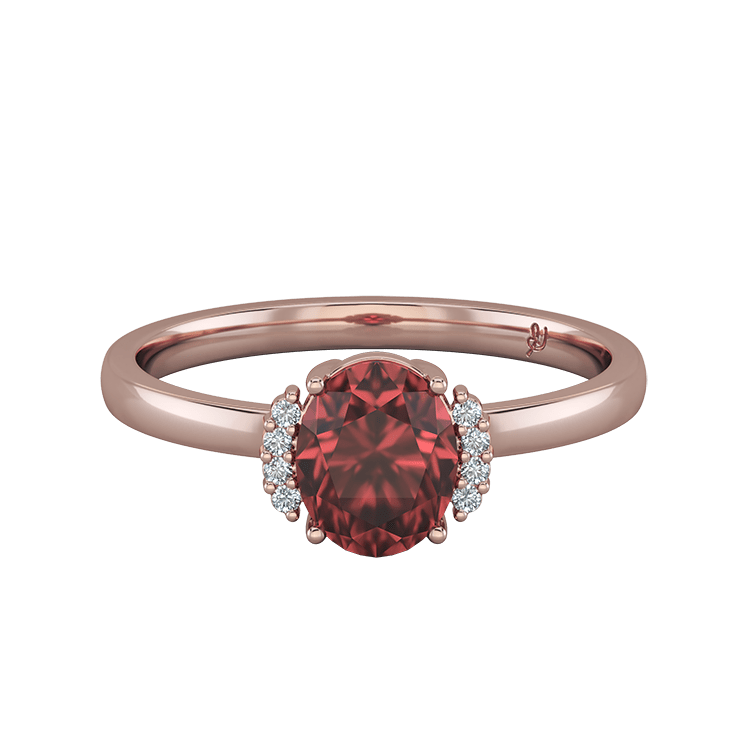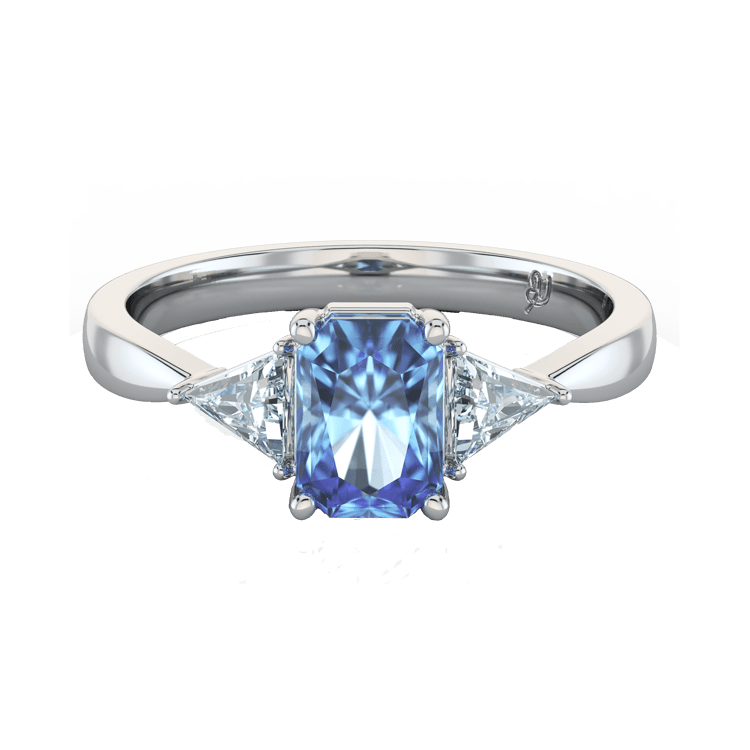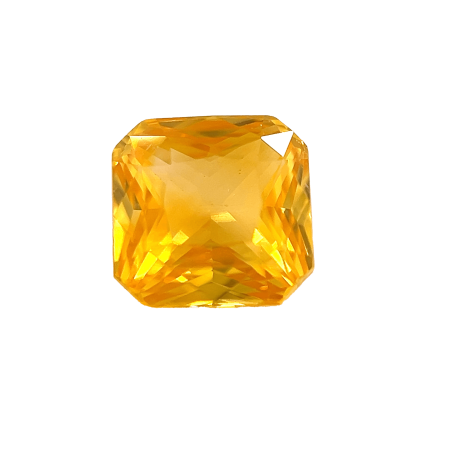Types of metals
September 27, 2022 2025-03-17 12:45Types of metals
Types of metals
Our standard precious metals are 18k gold (yellow, white and rose), Platinum and Sterling Silver – for a budget friendly option.
If you have something else in mind, please add your request in the “Additional requests” box in the Ring Designer and we will be in touch with your quote!
What metal is best for rings?
Metal matters so it is important to choose the right metal for your ring.
Hart & Halo is an inclusive brand. We feel everyone should be able to design and buy themselves a heirloom item that they can be proud of and pass on to future generations. Given metal is a big part of the expense of a ring, we have chosen to offer a range of materials to suit all budgets. Some are more decidedly durable than others, however any of the below metals will be suitable for your piece - with the right care and maintenance.

Sterling Silver
92.5% silver (the stamp inside the ring will say “925”) and 7.5% made up of an alloy to give it extra strength and durability. Most often this alloy is copper but can also be zinc. Sterling silver is a great affordable choice for your heirloom jewellery, however is the softest of our precious metals so will likely bend out of shape and damage when worn daily. In saying this, daily wear of your sterling silver jewellery will help prevent build up of dust and tarnish. Tarnish is caused by the alloy metals used and can be sped up on contact with water or chemicals (from cosmetics, moisturises etc.) To help prevent tarnishing we have all our sterling silver rings coated with rhodium. Rhodium is a very rare metal, even more so than silver, gold and platinum and comes from the platinum family. This coating lasts about 2 years, depending on how you wear it, so your ring will need to be re-dipped at this frequency if you wish to sustain that. In summary, your sterling silver ring will definitely be more cost effective, but be aware that it will more easily show the knocks and bumps of everyday life.

Gold
Gold in its purest form is 24 karat (24k) although this metal is soft and easily damaged, so impractical for everyday wear. The karats in gold is a balancing act between the amount of pure gold included and the strength of the final product. The lower the number (14k, 9k…) the less pure gold included so naturally you’ll get a less expensive product. The pros are, the less karats is generally stronger. At Hart & Halo we use 18 karat gold (18k) which is 75% pure gold, with 25% strengthening alloys. We feel this is a good compromise between a high gold content product which gives a rich and vibrant colour, but enough strengthening alloys to sustain the test of time. Fine jewellery is generally made of this level gold. All of our golds are 18k with differing combinations of alloys which give its final colour.
Point to note: Karat is NOT the same as Carat. While Karat is a unit to measure purity of gold, Carat is a unit of mass used to measure diamonds and gemstones.
18k White Gold
White gold doesn’t exist naturally in the earth. It is pure gold (which is yellow) mixed with a combination of other white metals such as silver, platinum and palladium. These metals also help strengthen the gold and increase its durability for jewellery. White gold tends to have a warmer tone than those of platinum or sterling silver, often with the yellow still somewhat in appearance. For some this warm tone is perfect, complements their skin tone and doesn’t require maintenance, but most white gold is coated in rhodium. The benefits of this are that it gives your ring extra strength and an icy white lustre, and given this then makes it a similar colour to diamonds, can give the illusion that they look bigger. The downside is that rhodium plating will need to be redone every couple of years otherwise the original colour will start to show through, making it look yellowy and patchy, so rhodium-plated white gold is higher maintenance.
At Hart & Halo, our default is not to apply the rhodium plating. We love the warm tones of white gold and prefer lower maintenance! We figure, if you are after the bright white colour then just go for Platinum. The cost is much of a muchness these days. If however, you would like 18k white gold and do want it rhodium plated, just let us know!
| Sterling Silver | 18k White Gold | Platinum | |
|---|---|---|---|
| Cost | $ | $$$ | $$ |
| Durability | The softest precious metal. Less durable than both gold and platinum and will scratch and bend under repetitive daily wear. | Stronger and more durable than sterling silver, but not as much as platinum. Will scratch and slowly erode over time with wearing. |
Highest strength and durability. Over time with wearing, the metal develops bumps and ridges which is known as a patina finish. The metal here has been moved around but not actually lost (ie. scratched off) as it would be for gold or silver. |
| Colour |
Near-white bright, and very shiny metal which can detract from the gemstones. As it tarnishes it gets darker in colour and loses its shine so will have a vintage feel as it ages. Rhodium plating adds a little grey to the colour but has a mirror-like lustre that lasts longer so will give jewellery a more modern and sophisticated look. |
Colour varies depending on the alloys but generally is quite a warm white colour. Optional: Rhodium plating gives it the crisp icy white appearance which is closer to that of platinum, but even slightly whiter and shinier still. |
Natural white colour, very similar to that which is achieved by rhodium plating sterling silver or white gold. |
| Tarnish | If not rhodium plated will tarnish and require daily cleaning and polishing to slow this. The tarnish can be cleaned off, it is just a higher maintenance metal (unless you like the tarnished look). | Will not tarnish however the white colour achieved with rhodium plating will become yellow unless the coating is maintained (every couple of years). | Will not tarnish. |
| Rhodium plating |
If rhodium plated will help with • strength, • durability and • reduce tarnishing, but will require re-dipping periodically (ie. 1-2yrs). |
If rhodium plated will help with • strength, • durability and • achieving bright white colour, but will require re-dipping periodically (ie. 1-2yrs) |
Not necessary. |
| Allergies | If the alloys contain nickel, can cause skin sensitivities. | If the alloys contain nickel, can cause skin sensitivities. | Hypoallergenic. |
| Other properties | Much lighter than platinum. | More rare than gold and silver. |
18k Yellow Gold
Yellow gold is the most popular colour historically and is the truest colour to natural 100% pure gold. Blended with silver, copper and brass, our 18k has a rich golden colour and looks particularly beautiful against warm skin tones, especially olive, tanned or dark skin. Yellow gold will really bring out the warmth in your chosen stone, particularly in a lighter stone. If you are wanting to keep the stone cooler in hue and not introduce more ‘colour’ into it, then you could consider setting the stones with white gold or platinum prongs, and the rest of the band in the colour of your preference.
18k Rose Gold
Rose gold has a higher percentage of copper and copper alloys which makes it the most durable of the gold colours and gives it a beautiful delicate coppery pink colour. Rose gold, also known as red or pink gold, is a relatively recent addition to the choice of metal colours and is gaining popularity with it being a romantic soft, feminine colour and looks stunning on all skin types from fair to dark. Rose gold does not require a plating to achieve its colour, as white gold generally does, hence has no maintenance to retain its colour. As a more neutral option between yellow and white gold, rose gold can be used to show off any colour of sapphire but works particularly well with the light delicate colours.

Platinum
As the strongest and most durable of all precious metals, platinum is able to be used in almost pure form, 95%, in jewellery making. The 5% alloy is used in this instance to give it more movement and malleability so that it is able to be worked with in creating fine jewellery. Platinum is the rarest of the precious metals and combined with simply having more of the precious metal in your ring, is often the most expensive. It does not erode over time as other metals do. When ‘scratched’ the metal is pushed around but not lost, giving it what we know as a patina finish which is often described as a satiny or slightly frosted look. If desired, given the metal is all still there, it is easily buffed back to its original shiny state. Platinum is naturally white in colour, so unlike other white metals doesn’t require a rhodium plating to achieve its final colour. This reduces the need for the regular maintenance the other white metals need. And finally it is hypoallergenic meaning it will not cause any skin sensitivities like other metals could (depending on the alloys used).
A final note, if any jewellery is rubbing up against each other, it should be made of the same metal to ensure one is not wearing the other away.



































